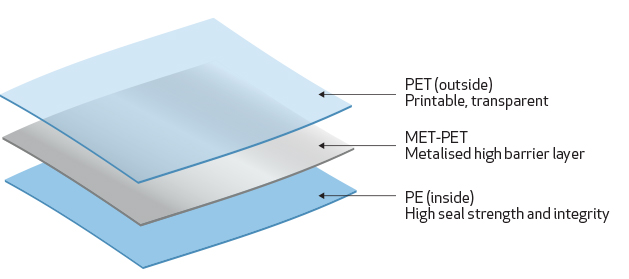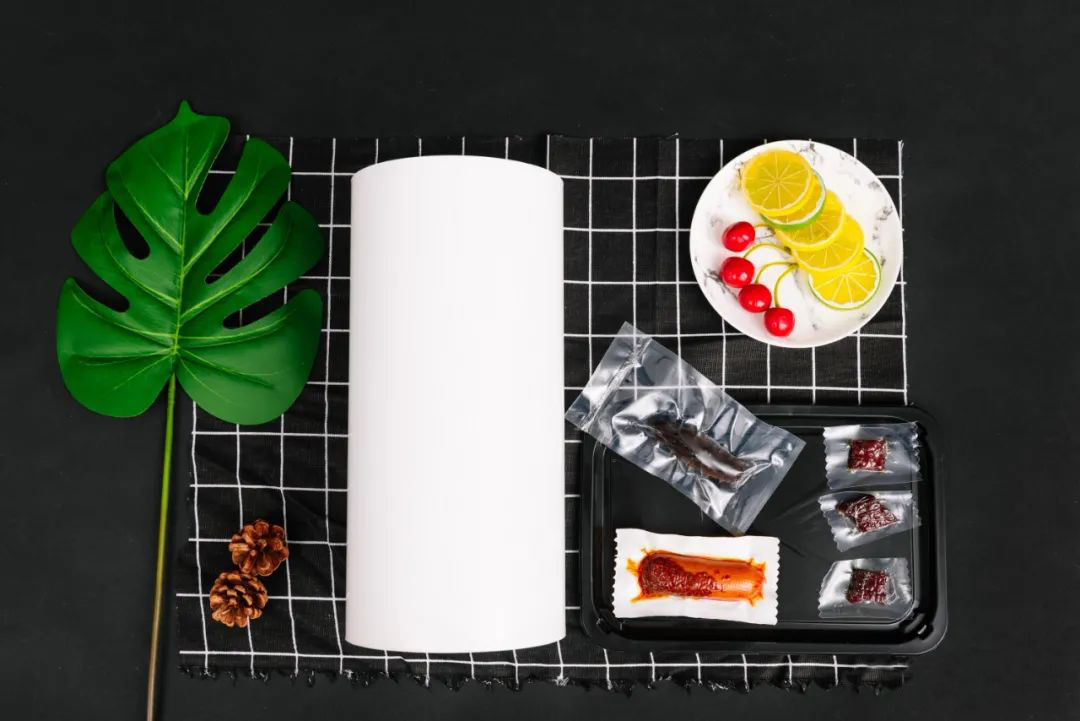In the film processing, one kind of raw material is extruded onto another kind of film that has been made or onto different kinds of films that have been made and adhesive is used to bond together to form multilayer films. This product is called composite films. Co-extruded film has most of the characteristics of composite film, but there is one difference, that is, all layers of the co-extruded film are extruded at the same time, and the layers are bonded by hot melting without lamination process.
The material of composite film is mostly plastic, but paper, metal foil (usually aluminum) or fabric can also be used. All layers of the co-extruded film are extruded at the same time, so there will be no aluminum foil, paper and other non-plastic materials.

Multi-layer co-extrusion barrier membrane is a functional composite film made by using multiple extruders to extrude the resin with high barrier performance and the melt of other resins through a common die. Multi-layer co-extrusion composite is a green composite production process, especially for the current food packaging industry, the raw materials used are generally materials certified by the United States Food and Health and Safety Agency, and the raw materials are uniformly supplied to each layer by a special transportation pipeline. There is no exposure of raw materials and environmental pollution in the processing process. Its concluding layer is made of modified LLDPE as raw material, which is non-toxic to the environment, food and human body and will not appear the traditional dry compound, that is, the so-called solvent residue phenomenon, without waste gas pollution; It is also different from dry compounding, solvent-free compounding and general single-layer extrusion compounding process, and requires drying oven for treatment, so the energy consumption is also less. In addition, the multi-layer co-extrusion composite process also has the following advantages.

(1) Low-cost multi-layer co-extrusion composite process uses a variety of resins with different functions. Only one process of blow molding can be used to make multi-functional composite film products, which can reduce production costs. In addition, it can also reduce the required performance of resin raw materials to the minimum thickness, and the minimum thickness of the single layer can reach 2~3 μ m. It can greatly reduce the use of expensive resin, thus reducing the material cost.
(2) The flexible multi-layer co-extrusion technology can match various raw materials in different combinations which make full use of raw materials with different properties and form at one time. It is not limited by the relevant product specifications of the market and can effectively meet the needs of different packaging occasions. The more layers, the more flexible the structure design and the lower the cost.
(3) High composite performance co-extrusion composite process combines molten adhesive and base resin. This process has a high peel strength which it’s usually up to 3N/15mm or more which it is suitable for general packaging materials. For products with high peel strength requirements, thermosensitive resin can be added for composite. Meanwhile, the peel strength can reach 14N/15mm, or even higher.
(4) Multi-layer co-extruded composite products can cover almost all packaging fields, including food, daily chemical products, beverages, pharmaceuticals, protective films and even aerospace products. At present, many dry composite products in China have adopted co-extrusion process abroad. Toothpaste tubes that cannot be produced by dry composite process. Paper plastic aluminum composite products. Aerospace and other products are also realized by co-extrusion process. With the in-depth research and continuous innovation of coextrusion composite resin, technology and equipment, multi-layer coextrusion composite will expand to a broader range.
Post time: Apr-17-2023
